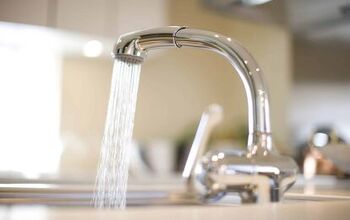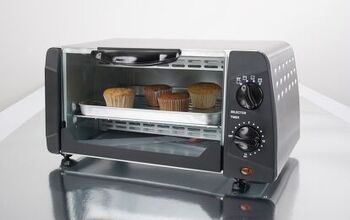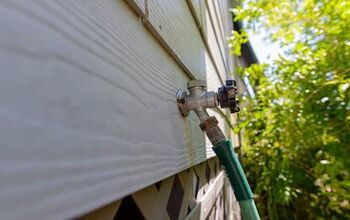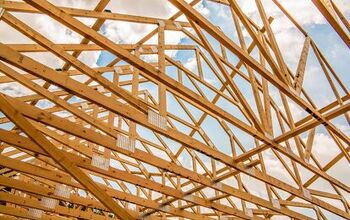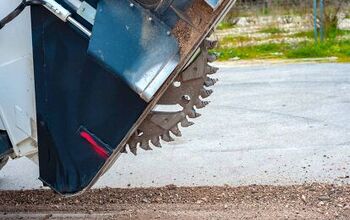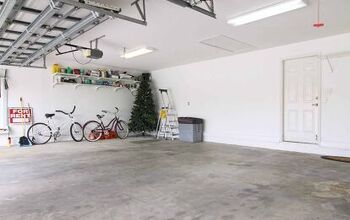Top Ways To Prevent Mold And Mildew In The Bathroom

Mold and mildew are types of fungi you never want to invite into your home. They can cause severe allergic reactions, breathing problems, and even serious medical issues. Since the bathroom is often the most humid room in a house, this makes it an ideal environment for mold and mildew to grow. Therefore, you must be extra diligent when you try to prevent these fungi from developing in your bathroom.
To prevent mold and mildew from forming in your bathroom, you must keep moisture levels low through proper ventilation. Use exhaust fans, open your bathroom window after showering, and leave your bathroom door open. Wipe down, disinfect, and dry wet surfaces immediately, and wash your towels and bathroom rugs regularly. Clean your bathroom frequently, and inspect for leaks and cracked grout.
In addition to health problems, mold and mildew can ruin walls and surfaces, which can cost you thousands of dollars to fix if left untreated. To ensure your environment remains healthy, you need to do all you can to prevent these growths from blossoming in your home’s most humid spaces. Below is a list of great ways to prevent mold and mildew from growing in your bathroom.
14 Ways To Keep Mold And Mildew Out Of Your Bathroom
1. Wipe And Dry Wet Surfaces Quickly
Since mold and mildew thrive in wet conditions, the best way to prevent these fungi from developing is to keep your bathroom as dry as possible. Bathrooms get wet every day when you shower and use the sink, so you must wipe up moisture quickly.
Use moisture-absorbing rags, a squeegee, and towels to dry all surfaces. The faster you remove moisture, the harder it is for mold and mildew to form. This also helps keep humidity levels down.
2. Ensure Bathroom Ventilation Functions Properly
Good ventilation is key to keeping mold and mildew out of your bathroom. With good ventilation, your bathroom can maintain normal humidity levels. To ensure the wet air in your bathroom doesn't linger for longer than necessary, provide good ventilation.
If you have a bathroom fan, use it, especially while you shower and immediately after. If it’s malfunctioning, address the problem right away. If you don’t have an exhaust fan in your bathroom, use fans or other air circulation methods to improve airflow.
3. Use A Dehumidifier
A dehumidifier has many uses in a home. These machines suck out extra moisture from the surrounding areas and keep humidity low. Dehumidifiers are excellent at controlling mold, mildew, and other fungal growth in a space.
If your bathroom is susceptible to mold, keep your dehumidifier near the bathroom. Ensure the bathroom door is open, so the dehumidifier can effectively absorb the excess moisture from this room.
4. Clean Your Bathroom Regularly
Keeping your bathroom clean is another great way to keep mold and mildew at bay. Use mold-fighting sprays with bleach or other disinfecting ingredients to stop mold dead in its tracks.
Regularly wiping down surfaces keeps your bathroom clean and reduces the risk of fungal and bacterial growth.
5. Inspect For Leaks
A bathroom leak is one of the most common ways to bring a serious mold and mildew issue into the home. Even slow, minor leaks can have serious consequences if left untreated. Not only will a leak increase your water bill, but it can also cause mold to spread quickly, which can cause serious damage.
Check for leaks whenever you deep clean your bathroom (which should be often). If you notice a leak, then address it immediately. The longer you wait, the more expensive the problem will be to fix.
6. Open Windows When Showering
Many bathrooms have windows. In many municipalities, bathrooms are required to have one window. Not only do windows allow natural light in, but they also allow moisture to escape.
If you have a window in your bathroom, make it a habit to open it while you shower, or at least once you finish showering. This will allow steam and extra moisture to quickly leave the room. This reduces condensation on walls and in hard-to-reach areas. In turn, it makes mold and mildew growth less likely.
7. Incorporate More Mold-Resistant Materials
Some materials are more susceptible to mold than others. As a rule, natural materials grow mold more easily than plastics and other man-made materials. Therefore, avoid using wood, cotton, and other organic materials in the bathroom whenever possible. If you do use natural materials, ensure they are kept clean and dry to avoid mold growth.
8. Add Moisture-Absorbing Plants
There are several moisture-loving plants that are great for bathrooms. Air plants, orchids, and other plants absorb moisture directly from the air. While they aren’t nearly as effective as a dehumidifier, they do their part to reduce excess humidity.
Plants also add oxygen and remove toxins, which improves air quality.
9. Keep The Bathroom Door Open
If you have a bathroom with poor ventilation or if it has a tendency to develop mold, leave the door open more often. It is particularly smart to leave the bathroom door open after the steam has left the bathroom, but the room is still moist.
Keeping your bathroom door open helps lower the humidity in this room to drop to a safer level. This makes it harder for mold and mildew to develop.
10. Replace Old Grout
If you have grout that is coming apart or cracking, then you should repair it right away. Not only does old grout look messy and ugly, but it can also trap water. Over time, these small cracks in grout can cause mold, mildew, and all sorts of bacteria to grow.
Replacing grout and old caulk is part of home maintenance, and it’s another issue that becomes more expensive the longer you wait.
11. Remove Clutter
Clutter promotes dust, filth, and bacterial growth, mostly because it makes cleaning more difficult. Try organizing your bathroom and remove as much clutter as possible. If you have four types of body wash and multiple facial cleansers, only keep the essentials in your shower or on the counter.
Removing clutter makes it easier to clean your bathroom. It also makes it harder for stagnant water, mold, and mildew to hide.
12. Wash Towels And Rugs Regularly
Since towels and rugs are usually made of cotton and other man-made materials, they are susceptible to mold and mildew. They also get wet every time you shower. Therefore, it's crucial you wash your bathroom towels regularly.
Not only is this important to stop the growth of mold and mildew, but it is also important for your personal hygiene. Don’t use the same towel more than three times, and make it a habit to wash and dry your bathroom rug weekly.
13. Add A Shower Rack For Soap And Shampoo
Mold and mildew have a tendency to grow underneath large shampoo bottles, soap dishes, and other cleansers that remain stagnant. To prevent mold and mildew from growing under your hygienic products, consider adding a shower rack with holes or a strainer.
This will reduce the amount of stagnant water on countertops and your shower floor. It also frees up space and makes your products easier to access.
14. Clean And Replace Shower Curtain As Needed
Shower curtains need attention as much as any bathroom surface. Unfortunately, due to their flimsy nature, they are often neglected. It’s fairly common to see mold and mildew develop on shower curtains over time.
In addition to purchasing mold-resistant shower curtains, you should spray and clean them regularly. Furthermore, shower curtain liners are not expensive. Don’t be afraid to replace your shower curtain regularly to ensure your bathroom stays clean and free of problematic fungi.
Summing Up Ways To Prevent Mold And Mildew In The Bathroom
Mold and mildew have a way of frequently developing in a bathroom. Since bathrooms are more humid than other rooms, and often have stagnant water, it is the perfect breeding ground for these fungi. To prevent mold and mildew from growing in your bathroom, keep the moisture levels low and surfaces clean.
In addition to cleaning your bathroom regularly, inspect for leaks, repair old grout, and wash your towels and rugs regularly. Use a dehumidifier to lower the humidity in your bathroom, and remember to keep your bathroom window open or exhaust fan on while showering so steam can escape.
Related Guides:

Tom Gaffey is an expert writer who currently resides in Washington D.C. Tom has a passion for real estate and home improvement writing, as well as travel and lifestyle writing. He lived the last twelve years in Hawaii where he worked closely with luxury resorts and event planners, mastering his knowledge of aesthetics and luxury products. This is where he found his passion for home improvement and a keen interest in DIY projects. Currently, Tom resides in Washington D.C, and also working on his debut fiction novel.
More by Tom Gaffey

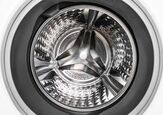










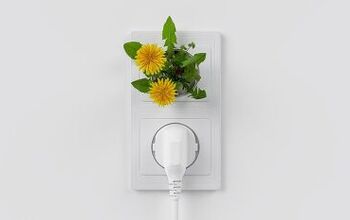
![The 10 Best Table Saws - [2022 Reviews & Buyer's Guide]](https://cdn-fastly.upgradedhome.com/media/2023/07/31/9070645/the-10-best-table-saws-2022-reviews-buyer-s-guide.jpg?size=350x220)

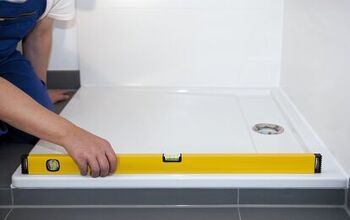
![Cost To Drill A Well [Pricing Per Foot & Cost By State]](https://cdn-fastly.upgradedhome.com/media/2023/07/31/9074980/cost-to-drill-a-well-pricing-per-foot-cost-by-state.jpg?size=350x220)


